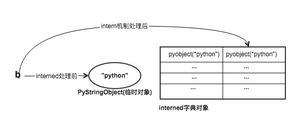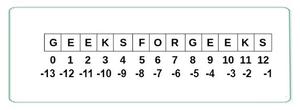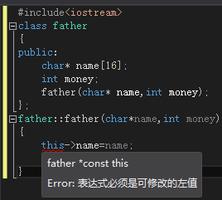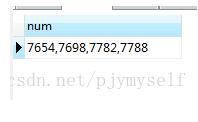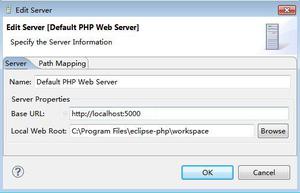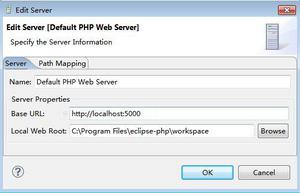python字符串的常用操作方法小结
本文实例为大家分享了python字符串的操作方法,供大家参考,具体内容如下
1.去除空格
str.strip():删除字符串两边的指定字符,括号的写入指定字符,默认为空格
>>> a=' hello '
>>> b=a.strip()
>>> print(b)
hello
str.lstrip():删除字符串左边的指定字符,括号的写入指定字符,默认为空格
>>> a=' hello '
>>> b=a.lstrip()
>>> print(b)
hello #右边空格可能看的不是很明显
str.rstrip():删除字符串右边指定字符,默认为空格
>>> a=' hello '
>>> b=a.rstrip()
>>> print(b)
hello
2.复制字符串
>>> a='hello world'
>>> b=a
>>> print(a,b)
hello world hello world
3.连接字符串
+:连接2个字符串
>>> a='hello '
>>> b='world'
>>> print(a+b)
hello world
注:此方法又称为 "万恶的加号",因为使用加号连接2个字符串会调用静态函数string_concat(register PyStringObject *a ,register PyObject * b),在这个函数中会开辟一块大小是a+b的内存的和的存储单元,然后将a,b字符串拷贝进去。如果是n个字符串相连 那么会开辟n-1次内存,是非常耗费资源的。
str.join:连接2个字符串,可指定连接符号(关于join,读者可以自己去查看一些相关资料)
>>> a='hello '
>>> b='####'
>>> a.join(b)
'#hello #hello #hello #'
4.查找字符串
#str.index 和str.find 功能相同,区别在于find()查找失败会返回-1,不会影响程序运行。一般用find!=-1或者find>-1来作为判断条件。
str.index:检测字符串中是否包含子字符串str,可指定范围
a='hello world'
>>> a.index('l')
2
>>> a.index('x')
Traceback (most recent call last):
File "<pyshell#40>", line 1, in <module>
a.index('x')
ValueError: substring not found
str.find:检测字符串中是否包含子字符串str,可指定范围
>>> a='hello world'
>>> a.find('l')
2
>>> a.find('x')
-1
5.比较字符串
str.cmp:比较两个对象,并根据结果返回一个整数。X< Y,返回值是负数 ,X>Y 返回的值为正数。
#python3已经没有该方法,官方文档是这么写的:
The cmp() function should be treated as gone, and the __cmp__() special method is no longer supported. Use __lt__() for sorting, __eq__() with __hash__(), and other rich comparisons as needed. (If you really need the cmp() functionality, you could use the expression (a > b) - (a < b) as the equivalent for cmp(a, b).)
大意就是cmp()函数已经“离开”了,如果你真的需要cmp()函数,你可以用表达式(a > b) - (a < b)代替cmp(a,b)
>>> a=100
>>> b=80
>>> cmp(a,b)
1
6.是否包含指定字符串
in |not in
>>> a='hello world'
>>> 'hello' in a
True
>>> '123' not in a
True
7.字符串长度
str.len
>>> a='hello world'
>>> print(len(a))
11
8.字符串中字母大小写转换
S.lower() #转换为小写
>>> a='Hello World'
>>> print(a.lower())
hello world
S.upper() #转换为大写
>>> a='Hello World'
>>> print(a.upper())
HELLO WORLD
S.swapcase() #大小写互换
>>> a='Hello World'
>>> print(a.swapcase())
hELLO wORLD
S.capitalize() #首字母大写
>>> a='Hello World'
>>> print(a.capitalize())
Hello world
9.将字符串放入中心位置可指定长度以及位置两边字符
str.center()
>>> a='hello world'
>>> print(a.center(40,'*'))
**************hello world***************
10.字符串统计
>>> a='hello world'
>>> print(a.count('l'))
3
11.字符串的测试、判断函数,这一类函数在string模块中没有,这些函数返回的都是bool值
S.startswith(prefix[,start[,end]]) #是否以prefix开头
S.endswith(suffix[,start[,end]]) #以suffix结尾
S.isalnum() #是否全是字母和数字,并至少有一个字符
S.isalpha() #是否全是字母,并至少有一个字符
S.isdigit() #是否全是数字,并至少有一个字符
S.isspace() #是否全是空白字符,并至少有一个字符
S.islower() #S中的字母是否全是小写
S.isupper() #S中的字母是否便是大写
S.istitle() #S是否是首字母大写的
12.字符串切片
str = '0123456789′
print str[0:3] #截取第一位到第三位的字符
print str[:] #截取字符串的全部字符
print str[6:] #截取第七个字符到结尾
print str[:-3] #截取从头开始到倒数第三个字符之前
print str[2] #截取第三个字符
print str[-1] #截取倒数第一个字符
print str[::-1] #创造一个与原字符串顺序相反的字符串
print str[-3:-1] #截取倒数第三位与倒数第一位之前的字符
print str[-3:] #截取倒数第三位到结尾
print str[:-5:-3] #逆序截取,截取倒数第五位数与倒数第三位数之间
这里需要强调的是,字符串对象是不可改变的,也就是说在python创建一个字符串后,你不能把这个字符中的某一部分改变。任何上面的函数改变了字符串后,都会返回一个新的字符串,原字串并没有变。
以上是 python字符串的常用操作方法小结 的全部内容, 来源链接: utcz.com/z/334071.html

